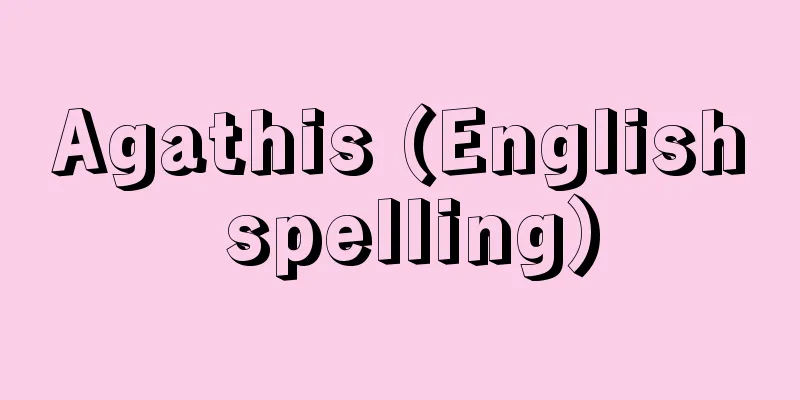Evening crane

|
A play by Kinoshita Junji. One act. Published in the January 1949 issue of Fujin Koron, and published the following year by Kobundo. It was first performed by the Budou no Kai at the Tenrikyo Auditorium (Nara Prefecture) in October 1949, and at the Mainichi Hall in Tokyo in January of the following year. It is a postwar rewrite of one of his plays, Tsuru Nyobo (The Crane Wife) (unpublished), which he had written during the war at the urging of Nakano Yoshio, using folk tales as the subject matter. It is based on the story of the crane's return of a favor, which appeared in the Sado Island Folktale Collection (included in National Folktale Records, edited by Yanagita Kunio). The honest and honest young man Yohyo has no idea that the beautiful wife is the crane whose life he had once saved. Enticed by the villagers, Yohyo is blinded by greed and asks for more of the fabric of the thousand cranes that Tsuu has woven for him. He then breaks his promise and peeks at Tsuu weaving at the loom. The crane uses its remaining feathers to weave the last piece of cloth, then disappears into the sunset. The premiere, directed by Okakura Shiro, with set design by Ito Kisaku, lighting by Anazawa Kimio, music by Dan Ikuma, and starring Yamamoto Yasue, created a beautiful and excellent stage production, which won the 2nd Mainichi Theater Award (1950). Since then, only Yamamoto's role as Tsuu has remained unchanged, and in 1983 the play achieved its 1000th performance. It has also been performed many times at schools and workplaces, translated into English, Chinese, Russian, and other languages, and performed overseas. It was also made into an opera in 1952 with music by Dan Ikuma, and in 1954 it was performed in the style of Noh, directed by Takechi Tetsuji, both of which were well received. [Shoji Sobue] "Yuzuru and the Story of Hikoichi" (Shincho Bunko) "Yuzuru and its World" (included in Kinoshita Junji Collection 1, 1988, Iwanami Shoten) Source: Shogakukan Encyclopedia Nipponica About Encyclopedia Nipponica Information | Legend |
|
木下順二(きのしたじゅんじ)の戯曲。一幕。1949年(昭和24)1月号の『婦人公論』に掲載、翌年弘文堂刊。ぶどうの会が49年10月に天理教講堂(奈良県)で初演、翌年1月に東京の毎日ホールで上演された。戦時下、中野好夫(よしお)の勧めで民話を題材にして書いた戯曲の一つ『鶴女房』(未発表)を戦後書き改めたもの。『佐渡島昔話集』(柳田国男(やなぎたくにお)編『全国昔話記録』所収)にあった鶴の恩返しの話に基づく。愚直な若者与ひょうは、美しい女房つうが、かつて命を救ってやった鶴とは知らない。村人にそそのかされた与ひょうは、欲に目がくらみ、つうが織ってくれた千羽鶴の織物をもっと欲しいとねだり、そのうえ、約束を破って機(はた)を織るつうの姿をのぞく。鶴は少なくなった自分の羽根を使い最後の布を織り上げ、夕焼け空に消えていく。 岡倉士朗演出、伊藤熹朔(きさく)装置、穴沢喜美男照明、團伊玖磨(だんいくま)音楽、山本安英(やすえ)主演の初演は、美しく優れた舞台を創造し、第2回毎日演劇賞を受賞(1950)した。以後、山本のつうの役のみは変わらず、1983年には1000回公演を達成した。学校、職場などでの上演も数多く、英語、中国語、ロシア語などにも翻訳され、海外でも上演された。また、1952年には團伊玖磨作曲によってオペラ化され、54年には武智鉄二(たけちてつじ)演出の能様式による上演もされ、それぞれ評判をよんだ。 [祖父江昭二] 『『夕鶴・彦一ばなし』(新潮文庫)』▽『『「夕鶴」とその世界』(『木下順二集1』所収・1988・岩波書店)』 出典 小学館 日本大百科全書(ニッポニカ)日本大百科全書(ニッポニカ)について 情報 | 凡例 |
Recommend
Istiqlāl (English spelling)
...In the 1930s, as armed resistance was suppress...
Biscuit - Biscuit (English spelling)
Western-style baked goods made primarily from whe...
Elmacin, G. (English spelling)ElmacinG
…His major work, the Blessed Corpus, is a world h...
Monstera pertusum (English spelling) Monsterapertusum
… [Takabayashi Masatoshi]. … *Some of the termino...
《By the River》 - By the River
...In the section on Asian films in the Encyclope...
Service ability test - Ekiyou no uryoku kentei
...The test is conducted on the amount and qualit...
Chhetri
... The Gurkhas are primarily Hindus who speak Ne...
Shu'ayb (English spelling)
...They accept taqiya, which means hiding one'...
Genre
…In English, it is called genre painting, in Fren...
Local anesthesia - local anesthesia
This is a method of reversibly blocking the condu...
Ukera - Ukera
→Okera Source: Shogakukan Encyclopedia Nipponica ...
Kakuchi Shoin - Kakuchi Shoin
...Later, natural history came to be called Gechi...
The Vanity and Uncertainty of All Sciences
…This book was an opportunity for the people of t...
Fuden
It refers to fields for which the responsibility f...
sit-in
…In February 1960, several black college students...









